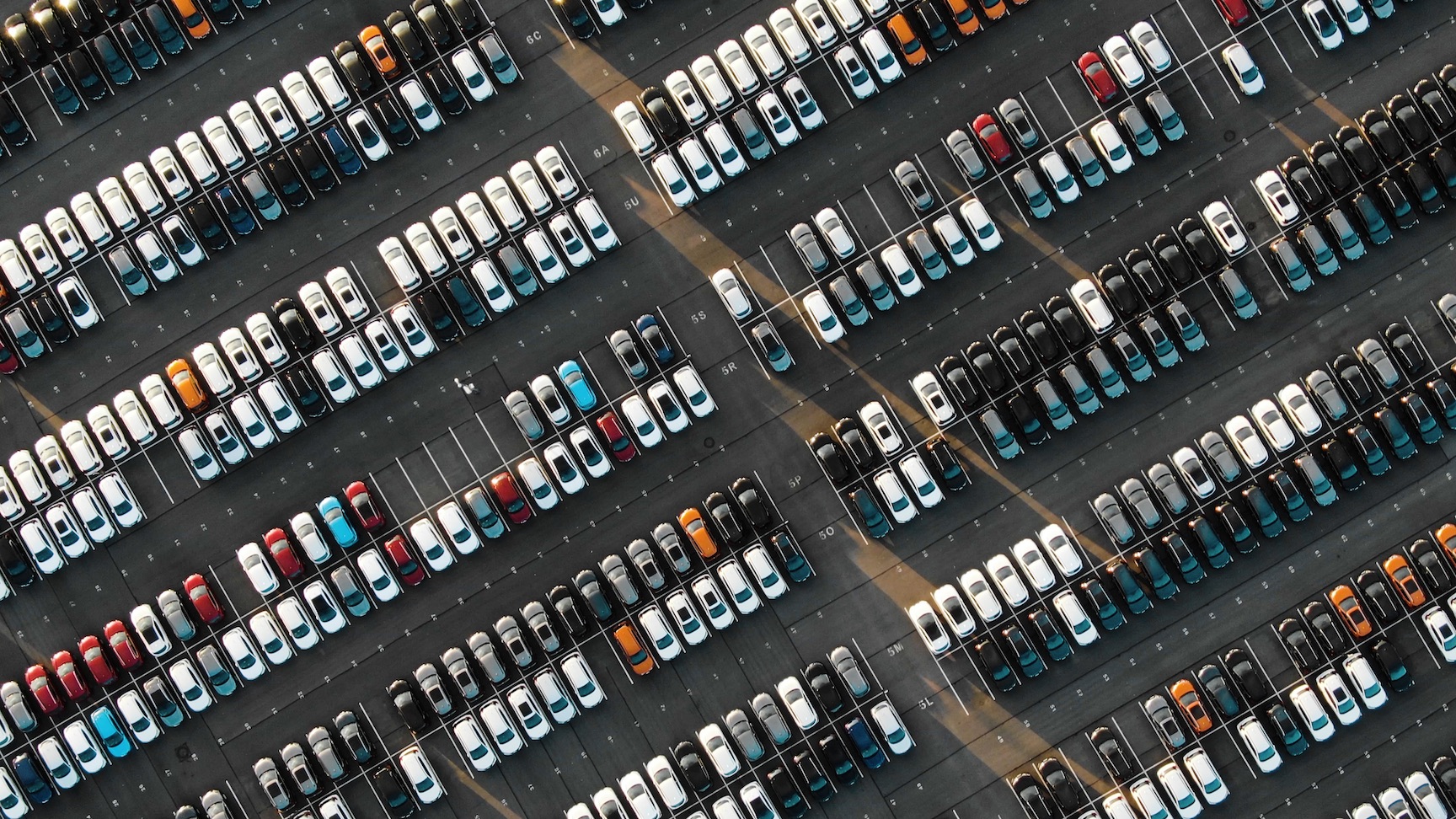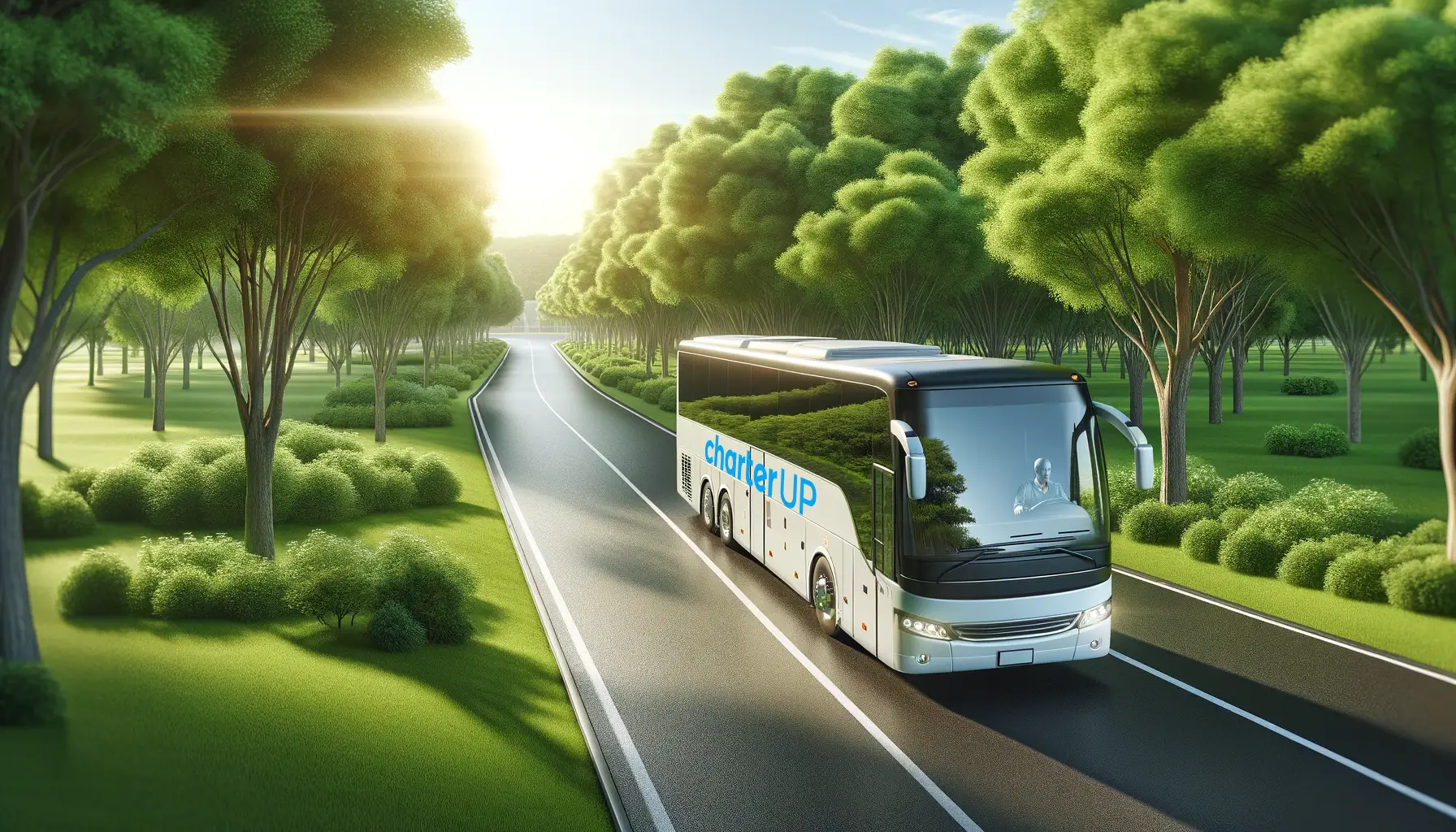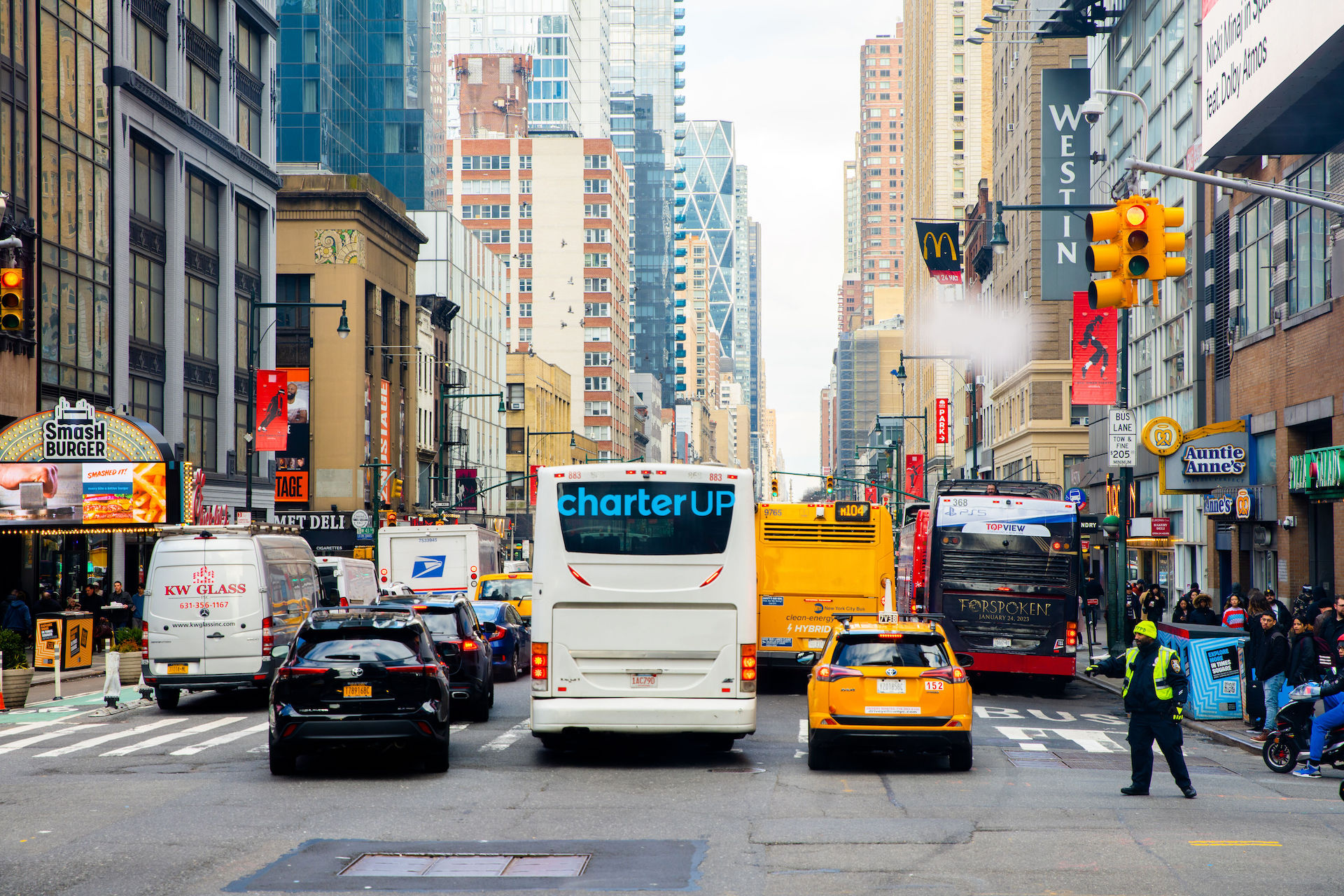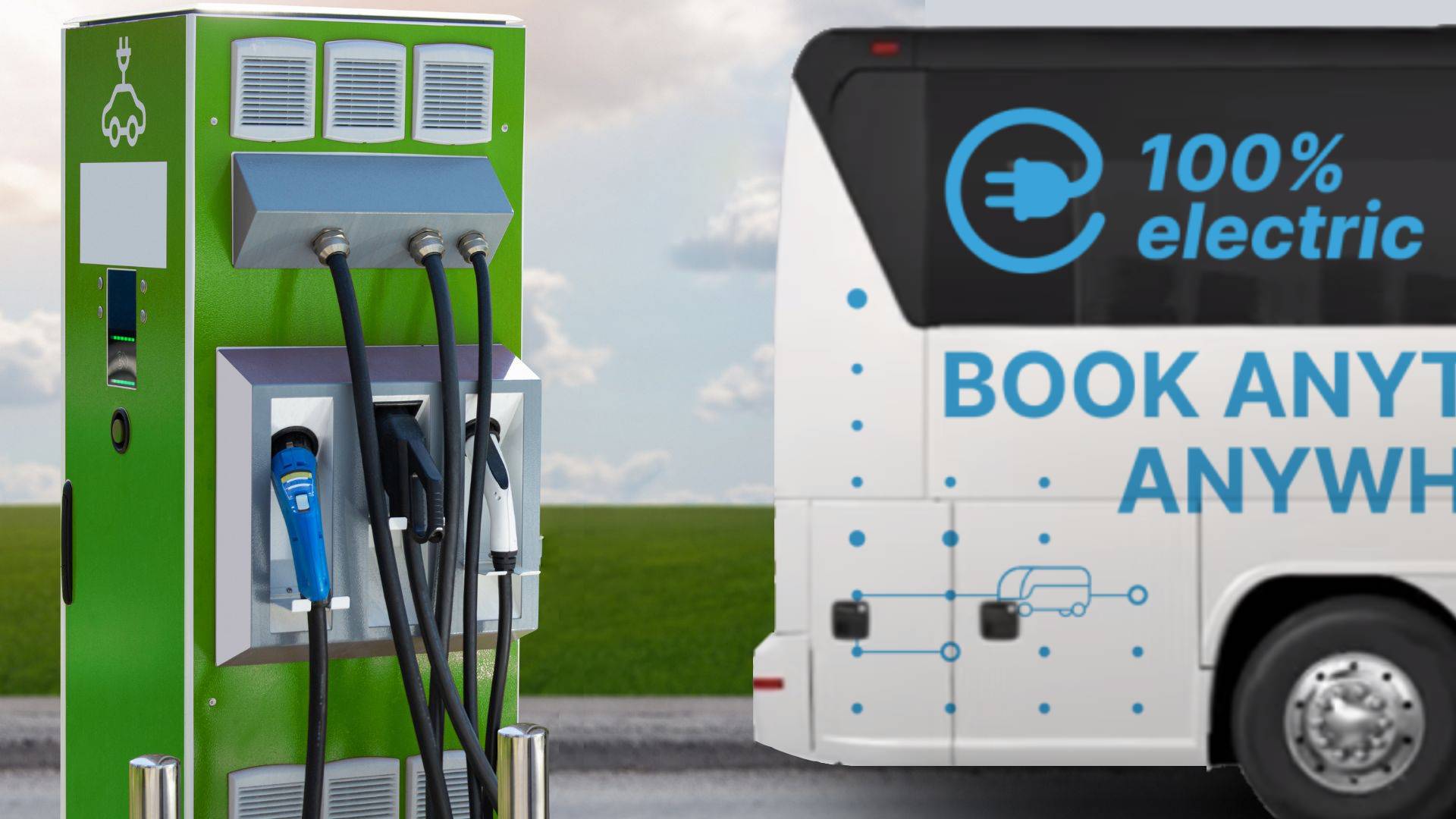The vast expanse of parking lots in our cities – overshadowing homes and commercial buildings in surface area – is a stark reminder of the space and resources dedicated to individual car use. This commitment to personal vehicles has profound effects on urban planning, environmental sustainability and community development. In light of this, group travel, especially via charter buses, emerges as a smart alternative, potentially reducing the need for such extensive parking infrastructure.
The Vast Landscape of Parking in America
In the United States, parking infrastructure occupies an estimated 1,000 square feet per car, according to the Research Institute for Housing America. Remarkably, the U.S. has between 800 million and 2 billion parking spaces, equating to 3 to 8 spaces per vehicle. This vast infrastructure covers more than 5 percent of all urban land, exceeding the combined area of states like Rhode Island and Delaware. Picture it:
- Envision each car in the U.S. having a parking space equivalent to a small studio apartment, with 1,000 square feet allocated per vehicle.
- Imagine the entire city of Los Angeles, famed for its sprawl, almost doubling in size. That’s roughly the space U.S. parking spots occupy, underscoring the vast extent of land dedicated solely to parking.
From a CharterUP standpoint, this underscores an opportunity: by facilitating group travel, we can significantly reduce the number of cars on the road, thereby lessening the demand for vast parking areas. This shift can free up urban space for more beneficial uses, aligning with our commitment to efficient and responsible transportation.
Green Spaces vs. Parking Spaces: Rethinking Urban Priorities
When we examine the sheer number of parking lots and their average sizes, the case for shared transportation solutions, like charter buses, becomes even more compelling. In cities where parking spaces are plentiful, replacing even a fraction of individual car trips with group travel can have a substantial impact.
This approach aligns with CharterUP’s mission to offer accessible and efficient transportation options that cater to the needs of the community while reducing the urban footprint of parking.
The contrast between the space occupied by parking lots and green spaces is a call to action. As we compare the benefits of iconic parks to the underutilized expanses of parking lots, the potential for change becomes clear. CharterUP believes in supporting this transition by promoting group travel. By reducing the number of individual vehicles, we can indirectly contribute to the expansion and preservation of urban green spaces, enhancing the quality of life in our cities.
The Stark Contrast in Land Usage
The scale of green spaces in some of the United States’ largest cities is impressive yet pales in comparison to the area dedicated to parking. For instance, New York City’s Gateway National Recreation Area spans an impressive 26,607 acres. However, when we turn our gaze to parking lots, the figures become even more astonishing. In Des Moines, IA alone, there are 7.75 square miles of surface parking, equivalent to the size of six Central Parks in New York City. This disparity is even more pronounced when considering New York City’s verified 20,714 parking lots, covering a staggering 377.7 million square feet.
Environmental and Social Implications
This disproportionate allocation of urban land to parking rather than green spaces has profound environmental and social implications. Green spaces like parks are not just areas for recreation and beauty; they play crucial roles in improving air quality, reducing urban heat islands and enhancing biodiversity. In contrast, vast parking lots contribute significantly to environmental degradation, including heat retention and pollution.
A Call for Transformation
The comparison between the areas covered by parking lots and those dedicated to parks and green spaces calls for a reevaluation of urban land use. As CharterUP champions the use of charter buses for group travel, we indirectly advocate for a reduction in the need for extensive parking infrastructure. Fewer cars on the road mean a decreased demand for parking space, opening up possibilities for more green spaces.
Imagine if even a fraction of the space currently occupied by parking lots were converted into green spaces. The benefits would be far-reaching: cooler city temperatures, improved air quality and enhanced community well-being. Such a shift aligns with CharterUP’s vision of a more sustainable, healthy and connected urban environment.
“For decades, American cities have had a parking problem: too much of it.” — The Wall Street Journal @WSJ
— Brent Toderian (@BrentToderian) April 3, 2023
Main stream media is finally getting the parking memo.https://t.co/WmQAjAUUr7
The Role of Group Travel In Creating More Green Spaces
Promoting group travel through charter buses plays a pivotal role in this transformation. By providing an efficient and eco-friendly alternative to individual car use, CharterUP contributes to reducing the number of vehicles requiring parking spaces. This shift not only supports environmental sustainability but also fosters a sense of community and connectedness, values at the core of our mission.
The comparison between green spaces and parking lots in our cities underscores the need for a paradigm shift in urban planning and transportation. CharterUP’s commitment to providing quality, sustainable group travel solutions is a step toward this change, promoting a vision of urban environments where green spaces take precedence over concrete expanses. By choosing charter buses, we are not just traveling together but moving towards a greener, more sustainable future for our urban landscapes.
The Urban Heat Island Effect: A Cooler Approach Through Group Travel
The urban heat island effect represents a critical environmental challenge in modern cities. This phenomenon occurs when urban areas, replete with concrete, asphalt and other heat-absorbing materials, become significantly warmer than their surrounding rural areas. Parking lots, with their vast, unshaded expanses of asphalt, play a pivotal role in exacerbating this effect. The dark surfaces of these lots absorb and retain heat from the sun, contributing to higher ambient temperatures in urban environments.
Understanding the Impact
The implications of the urban heat island effect are far-reaching. Higher temperatures in cities lead to increased energy consumption, as residents and businesses rely more on air conditioning to stay cool. This increased energy usage not only drives up costs for individuals and city budgets but also contributes to higher greenhouse gas emissions. Moreover, elevated temperatures can have serious public health ramifications, including heatstroke and respiratory difficulties, particularly among vulnerable populations like the elderly and those with pre-existing health conditions.
CharterUP’s Role in Mitigating Urban Heat
At CharterUP, we understand that our choices in urban mobility play a crucial role in addressing the urban heat island effect. We offer a tangible solution by promoting and facilitating group travel through charter buses. Each charter bus has the potential to replace numerous cars on the road. Fewer cars mean less demand for extensive parking lot areas. By reducing the number of parking lots or decreasing their size, we can significantly reduce the urban areas covered by heat-absorbing surfaces.
The Ripple Effect of Sustainable Choices
The benefits of reducing the urban heat island effect through group travel are multifold. Beyond the immediate environmental and health benefits, this approach promotes a more sustainable and community-oriented urban landscape. It encourages city planners and policymakers to rethink how space is allocated, prioritizing people and the environment over cars. As more individuals and organizations choose charter buses for their group travel needs, the cumulative impact can significantly reduce urban temperatures, enhancing the overall quality of life in our cities.
Cost Analysis: The Economic Advantage of Shared Transportation
Parking infrastructure involves hidden costs, such as maintenance and stormwater management. These areas, often just appendages to the places we value, fail to generate wealth for cities, representing a significant opportunity cost.
The economic implications of our transportation choices are profound, particularly when considering the cost of maintaining parking lots versus the benefits of shared transportation options like charter buses. At CharterUP, we recognize the significant economic advantages that shared transportation offers, not only in direct cost savings but also in addressing the often-overlooked opportunity costs associated with parking infrastructure.
The High Cost of Parking Infrastructure
Maintaining parking lots involves a myriad of expenses that go beyond the obvious. These costs include land acquisition, construction, upkeep and security. In urban areas where land is at a premium, the opportunity cost of using valuable space for parking rather than for more productive purposes like housing or commercial development is particularly high. Moreover, underutilized parking spaces represent a significant financial drain, as the resources invested in these areas do not yield an adequate return.
Financial Efficiency of Shared Transportation
In contrast, shared transportation models, like charter buses, offer a more economically efficient use of resources. By transporting larger groups of people in a single vehicle, charter buses maximize the utility of urban space. Fewer vehicles on the road translates to reduced demand for parking space, thereby alleviating the financial burden of maintaining extensive parking infrastructure. This efficient use of space and resources aligns with CharterUP’s commitment to offering cost-effective transportation solutions.
Environmental Cost Considerations
The environmental costs associated with extensive parking lots also have financial implications. Urban areas with large parking infrastructures face higher temperatures due to the urban heat island effect, leading to increased energy consumption for cooling. By reducing the number of parking lots and promoting shared transportation, cities can mitigate these environmental costs, leading to long-term financial savings.
The Ripple Effect on Urban Development
The shift towards shared transportation has a ripple effect on urban development and economics. By reducing the need for parking, cities can repurpose land for more valuable uses, potentially increasing tax revenues and promoting economic development. This aligns with CharterUP’s vision of supporting sustainable urban growth and development.
The economic advantages of shared transportation, particularly through charter buses, are clear and multifaceted. CharterUP’s services not only offer direct cost savings by reducing the need for expensive parking infrastructure but also contribute to a more sustainable and economically efficient urban environment. By choosing shared transportation, we embrace a model that makes financial sense and supports the broader goals of sustainable urban development and community well-being.
The Potential for Greener Alternatives: CharterUP’s Role
“Urban design is heavily influenced by parking requirements, affecting everything from building placement to the size and location of entrances. Reducing parking space can open up opportunities for more green spaces and efficient land use, benefiting both the environment and urban dwellers.
The movement towards greener alternatives in urban planning is gaining momentum, and CharterUP is proud to be part of this transition. By promoting charter buses as a viable alternative to individual car use, we support the conversion of parking spaces into green areas. This not only benefits the environment but also aligns with our vision of a more connected and sustainable urban future.
The troubling scale of parking lots in our cities reflects a transportation paradigm that requires rethinking. At CharterUP, we believe that group travel offers a practical and sustainable solution. By embracing shared transportation, we can reduce the need for extensive parking infrastructure, leading to more vibrant, greener and more sustainable urban environments. This approach is not just about moving people; it’s about moving towards a better future for our cities and communities.



